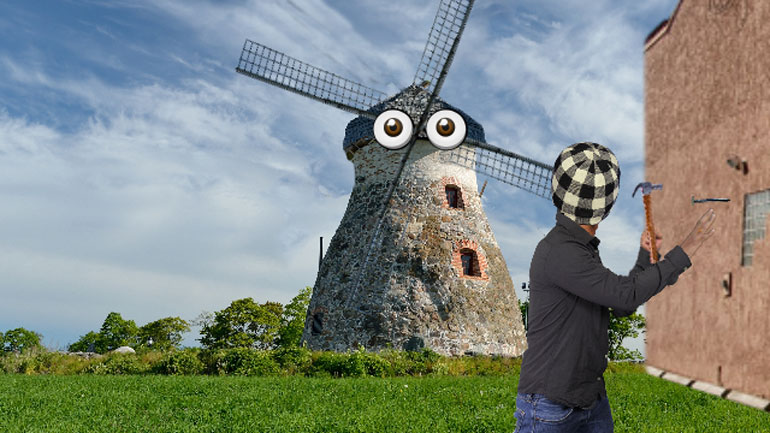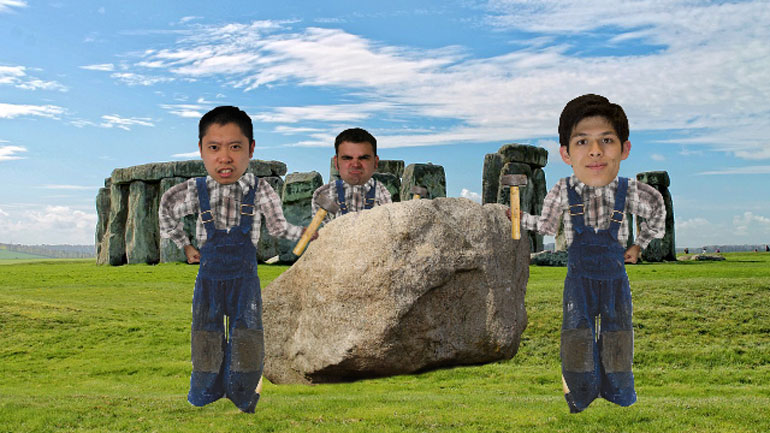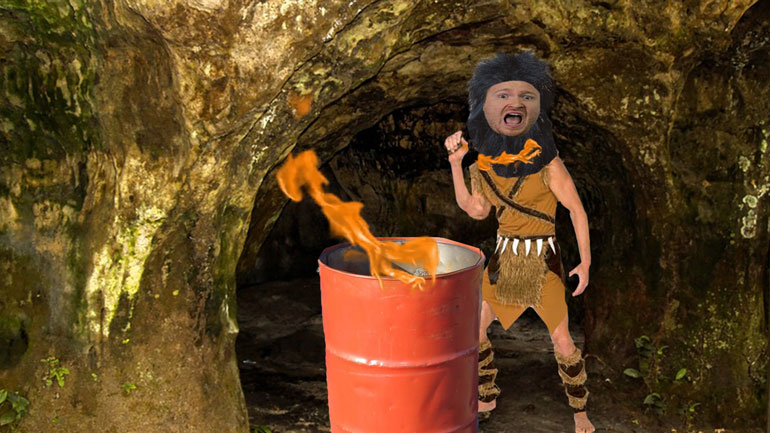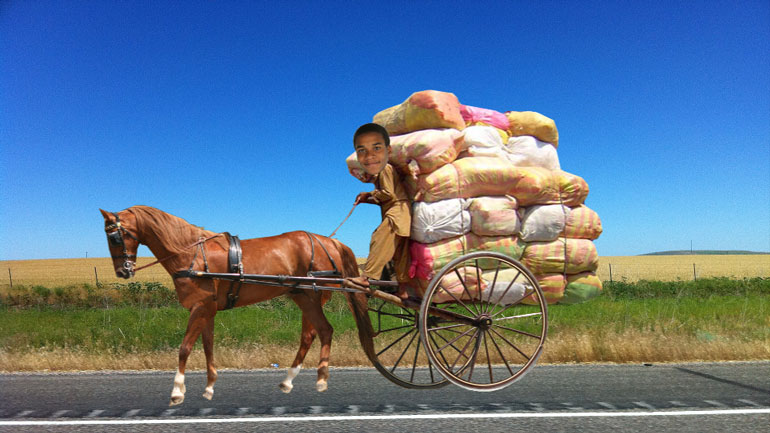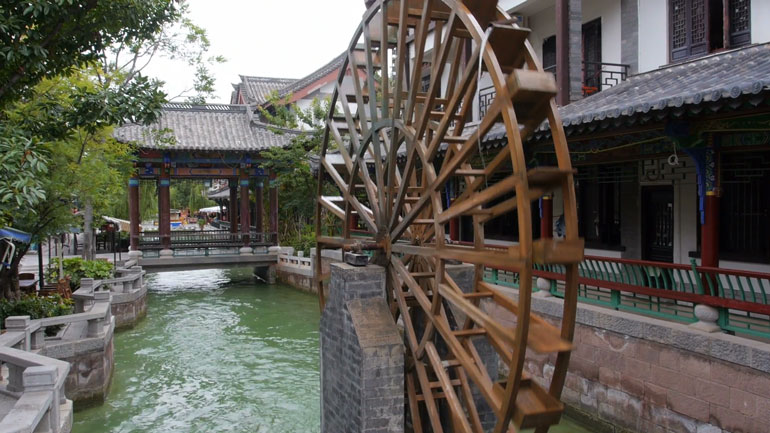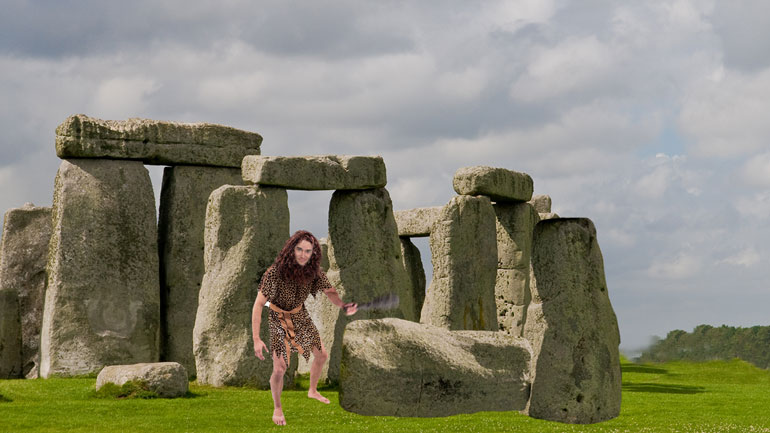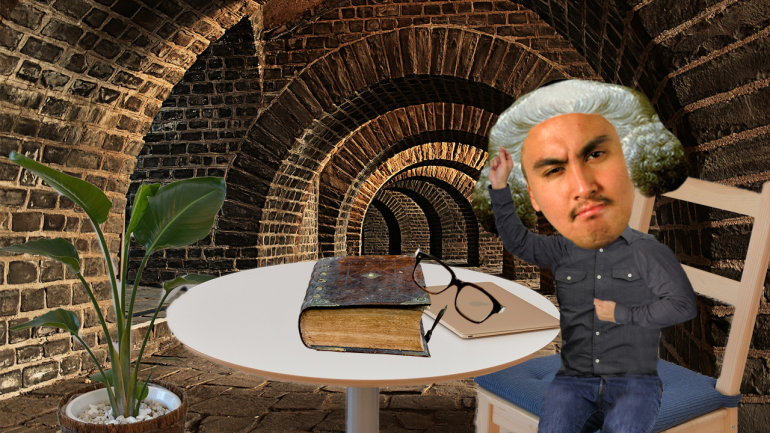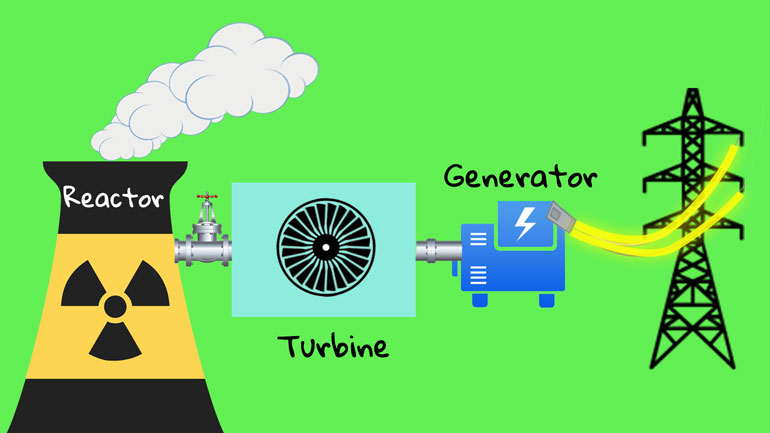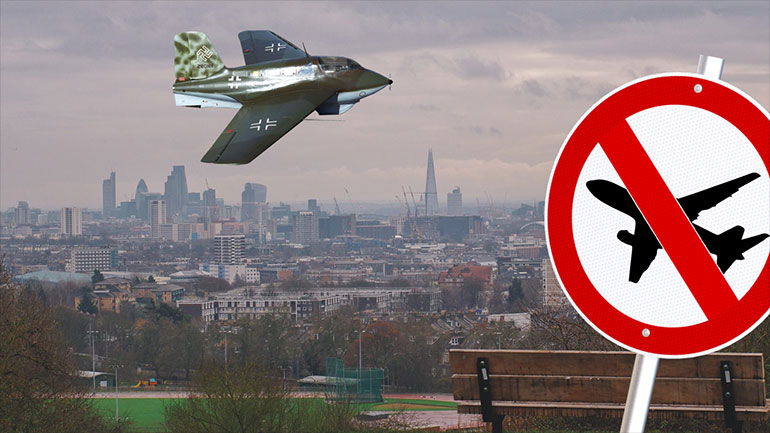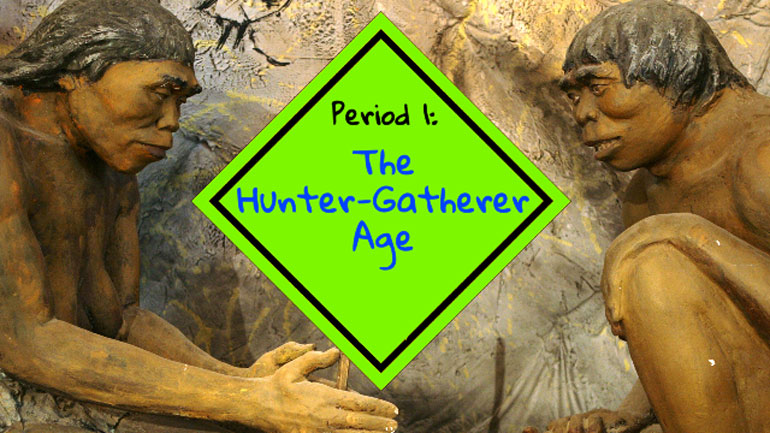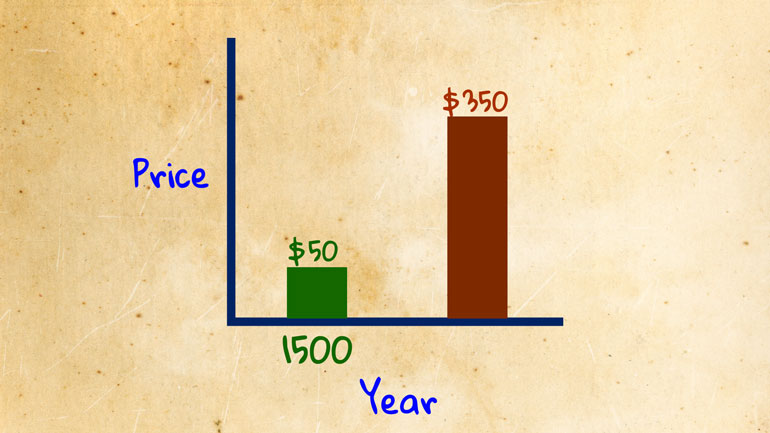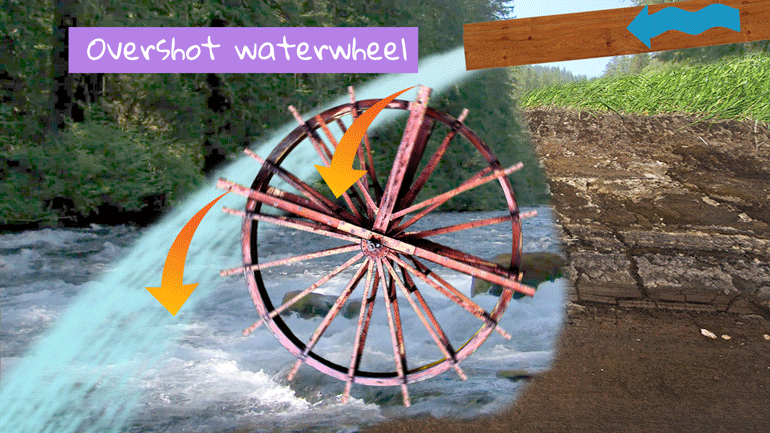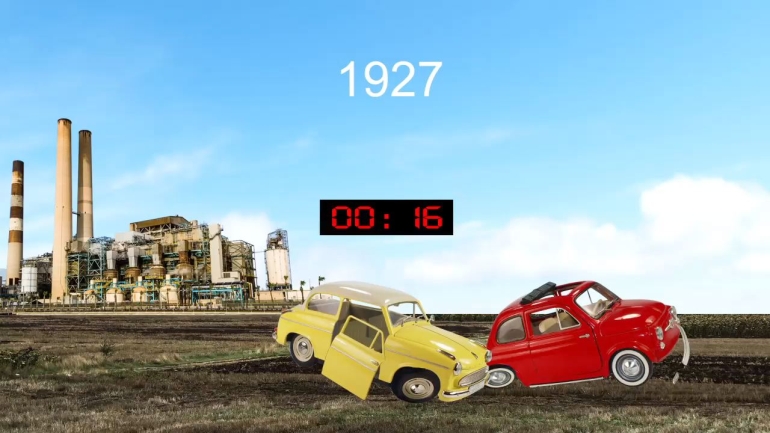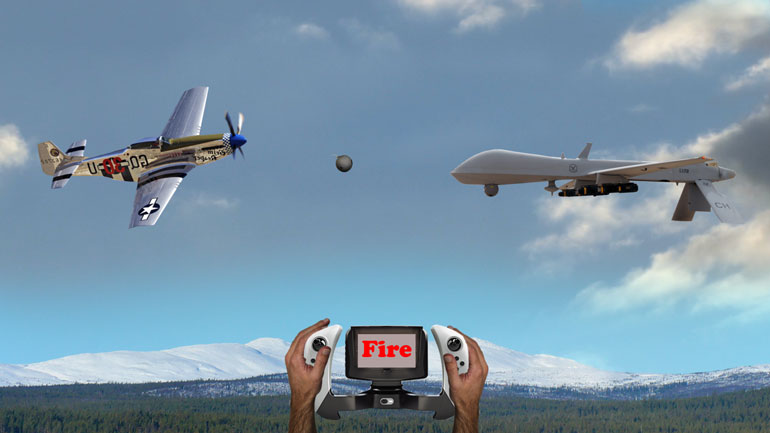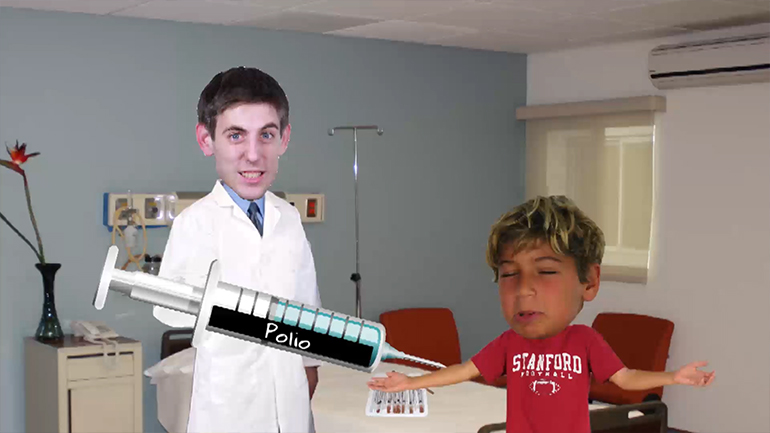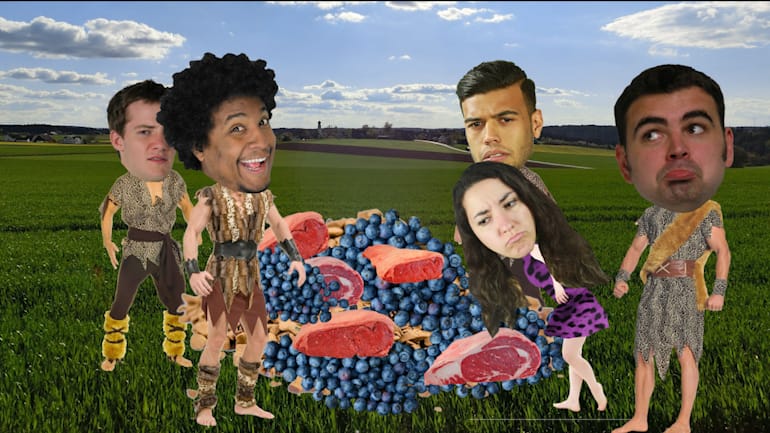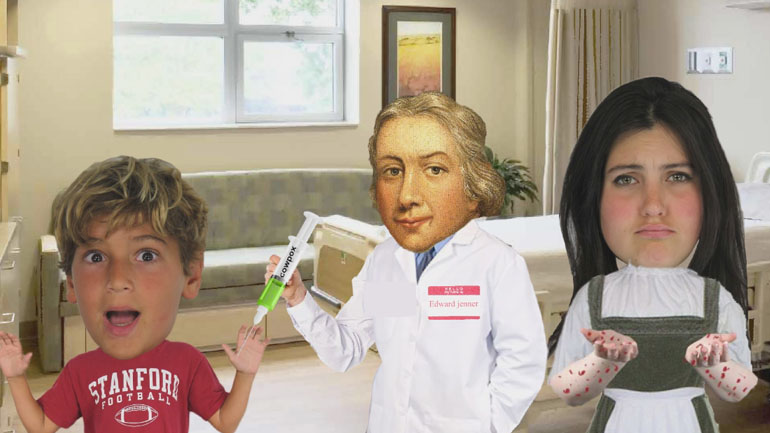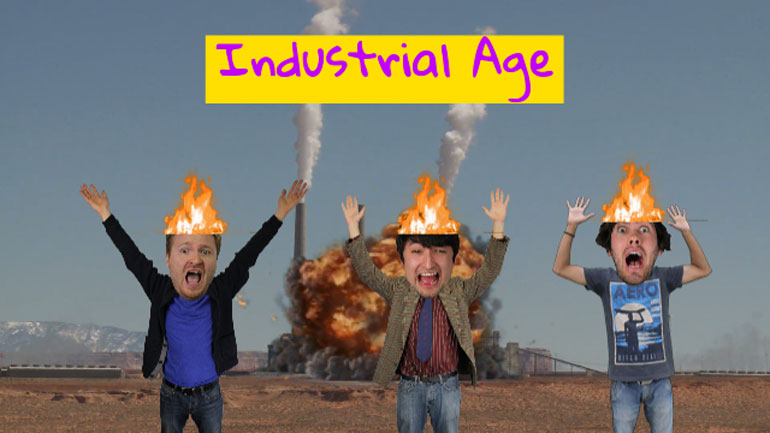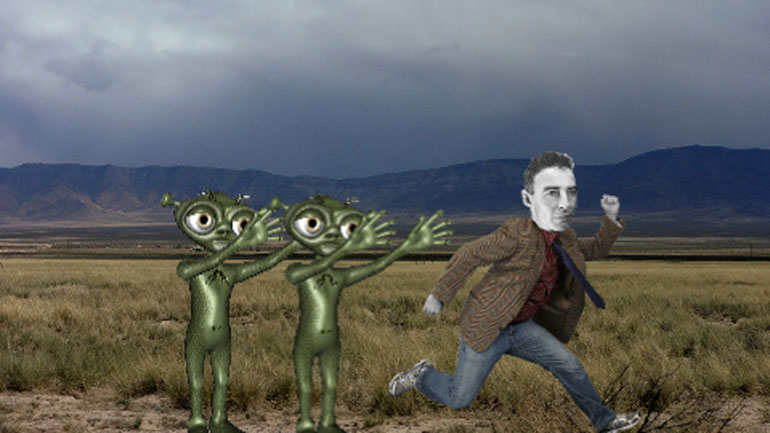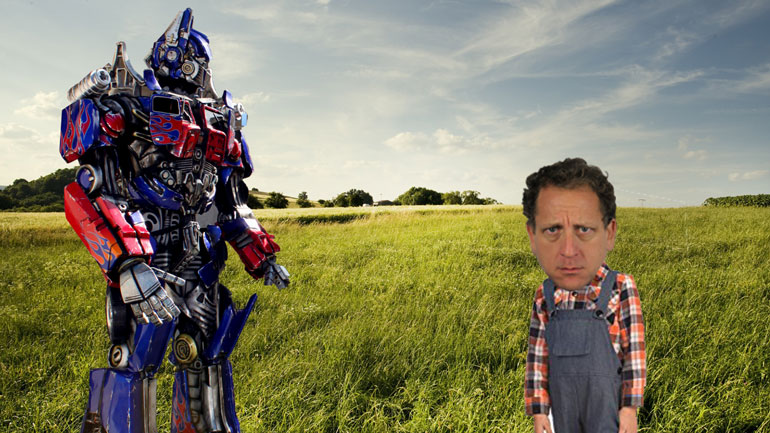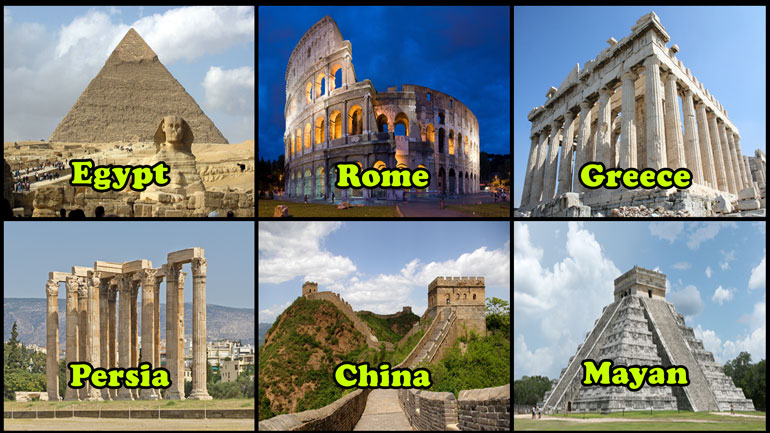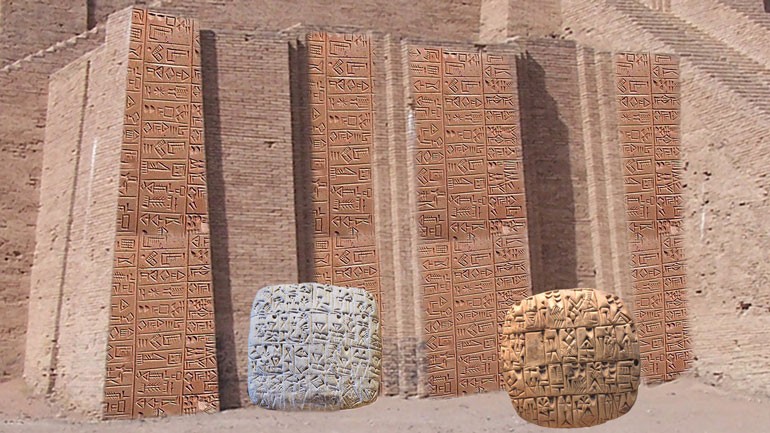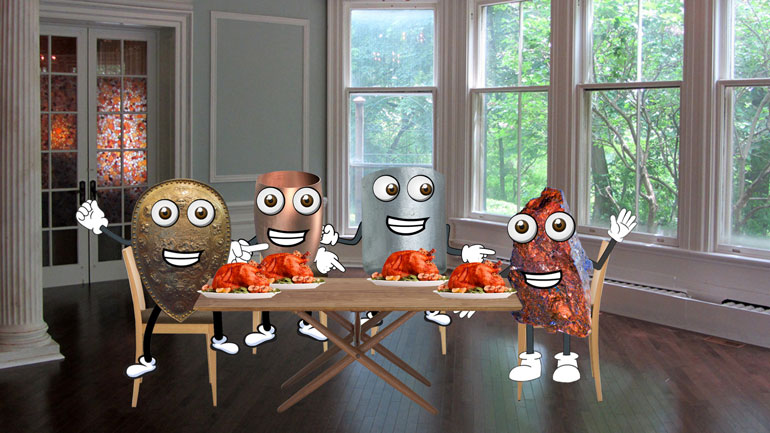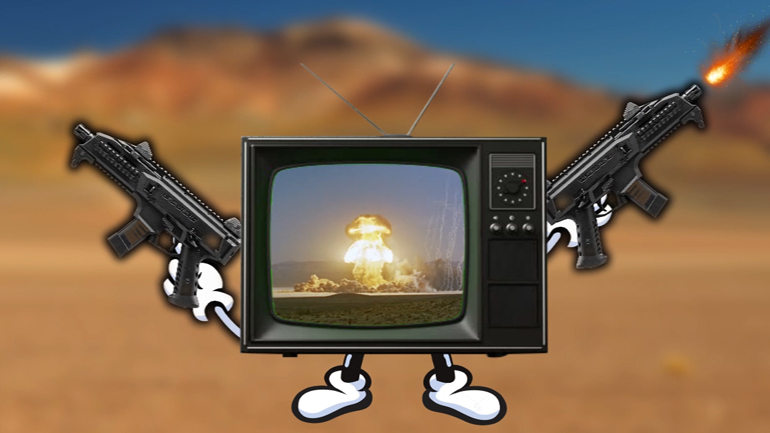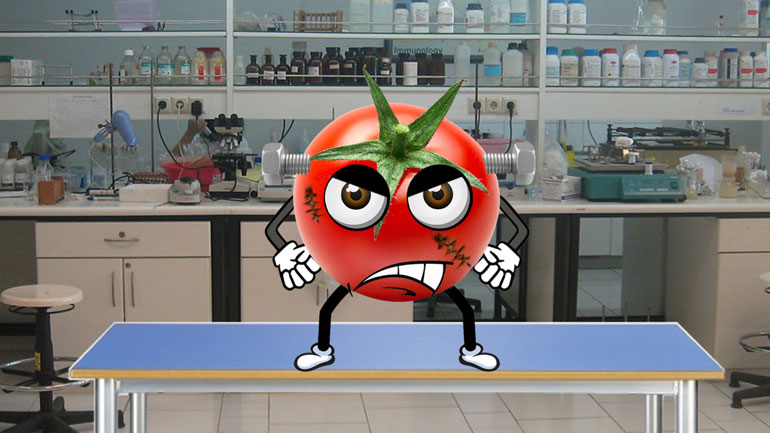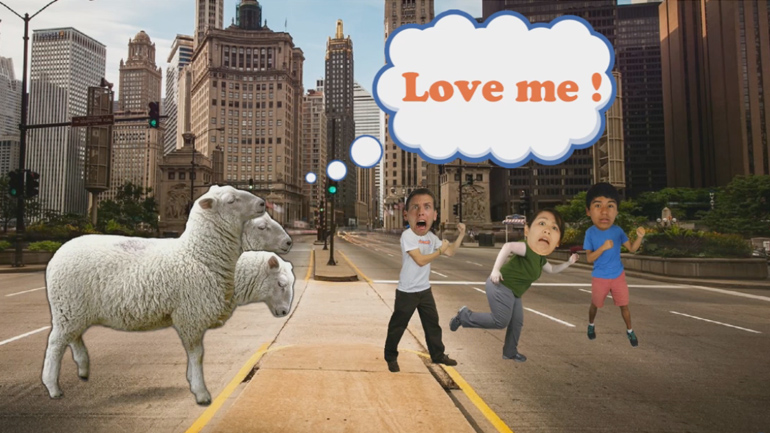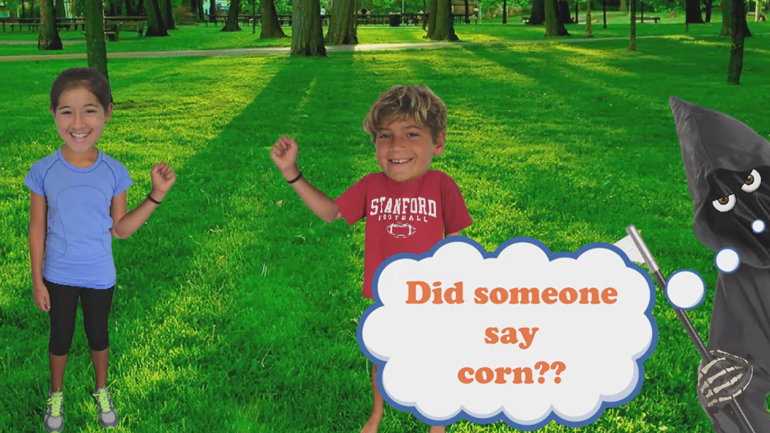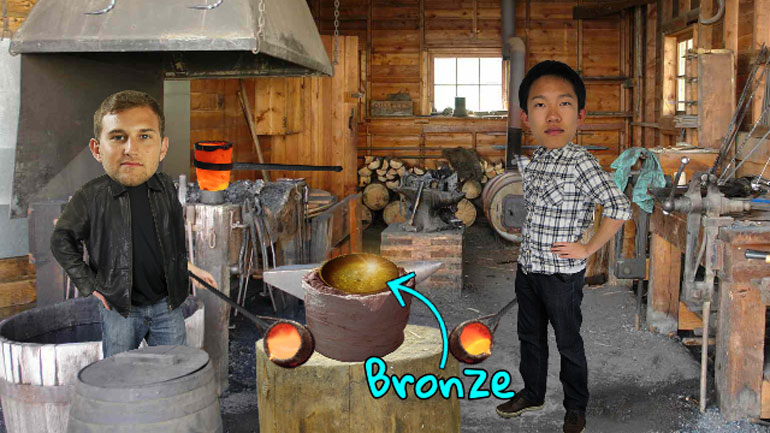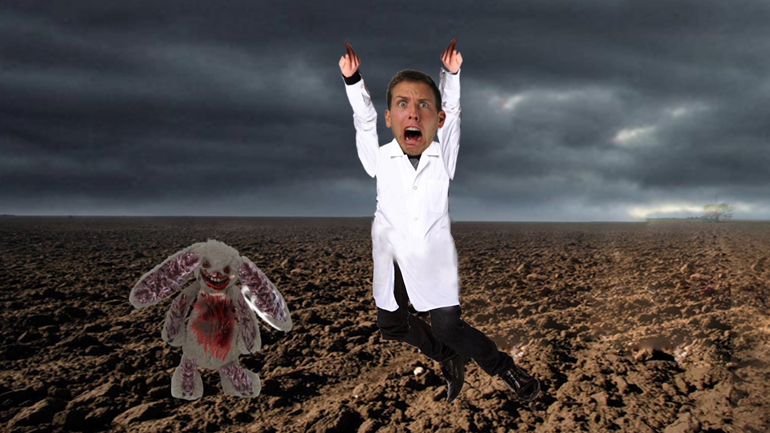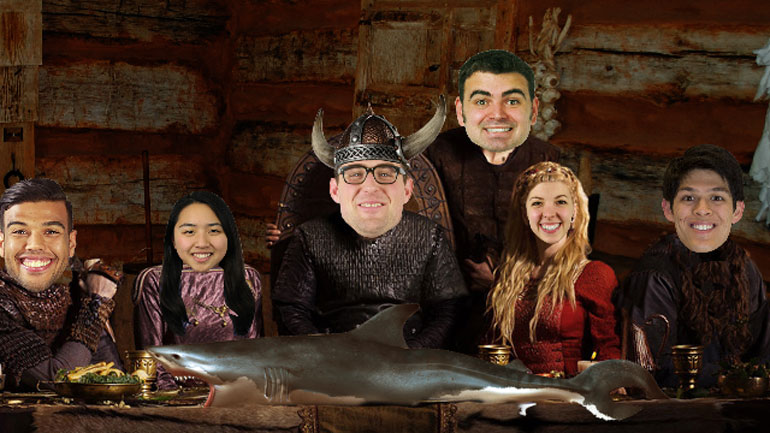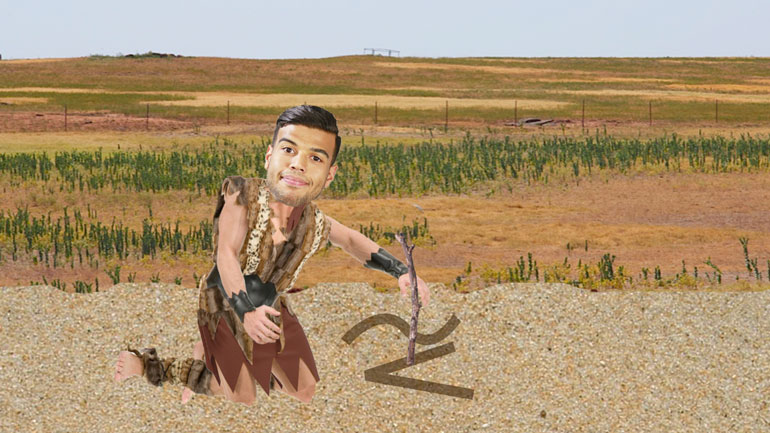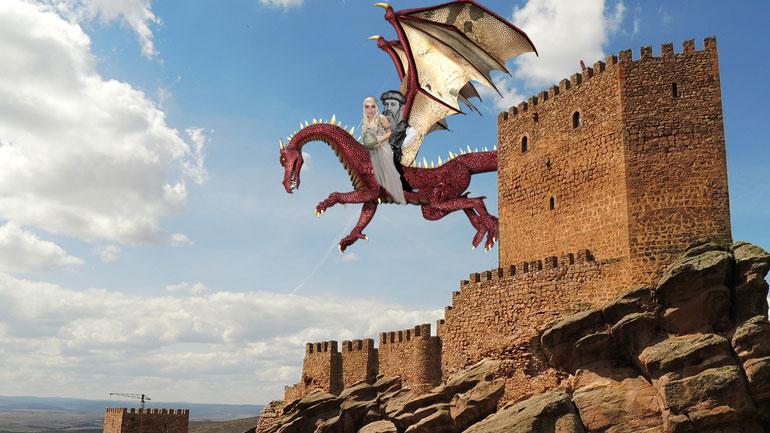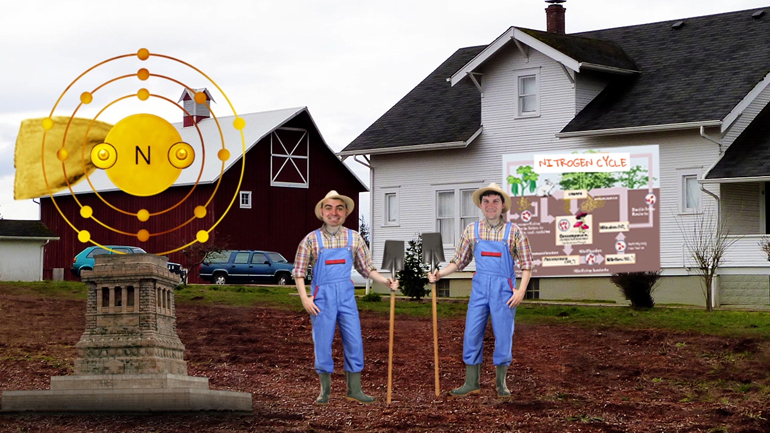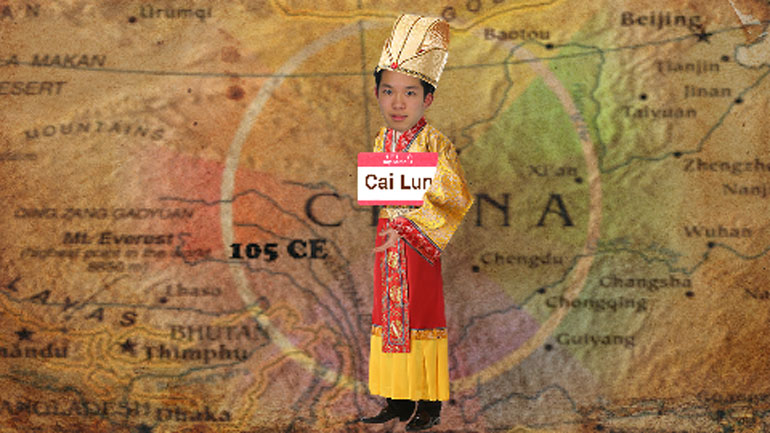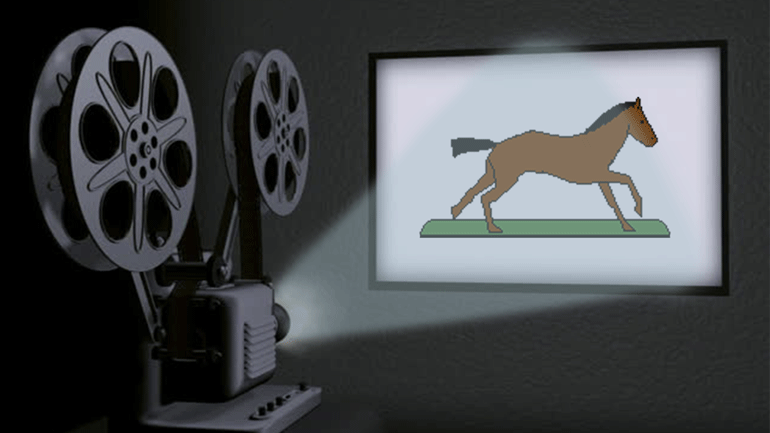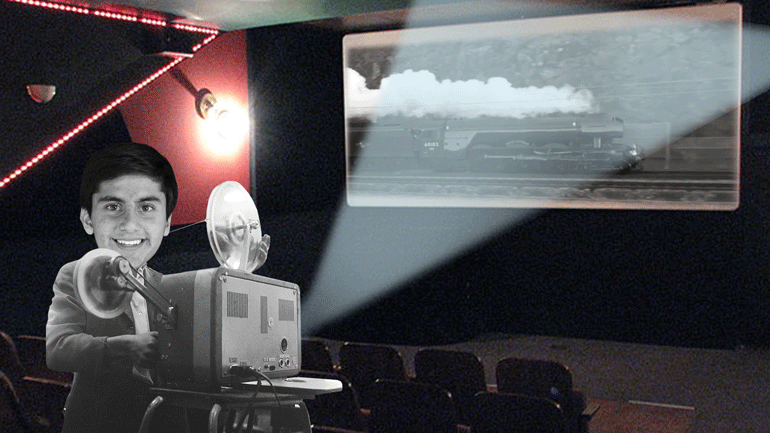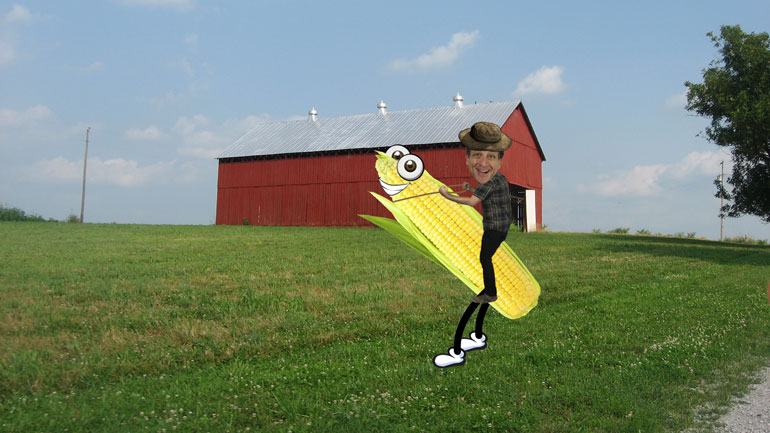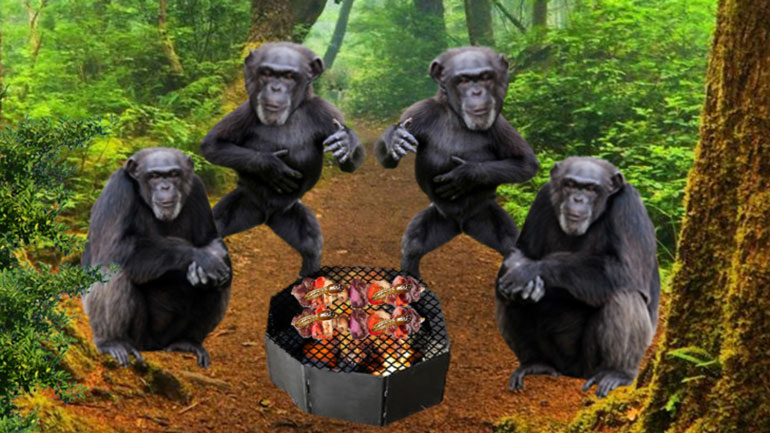ShmoopTube
Where Monty Python meets your 10th grade teacher.
Search Thousands of Shmoop Videos
History of Technology Videos 160 videos
What's the deal with wind? And why does it have to be so...windy?
How did people move stuff around before the wheel was invented? More importantly, why didn't they take a break for a few minutes from moving stuff...
History of Technology 3: Agricultural Technology 33 Views
Share It!
Description:
Agricultural technologies include reapers, barbed wire, artificial fertilizer, pesticides, Transformers, robots in disguise...wait. Maybe not that last one. You should probably watch this video, though, just to be sure.
Transcript
- 00:03
Okay, time for a whirlwind tour of the history of agriculture tech. [Tornado picks up a tractor]
- 00:07
It’ll be like a sharknado.
- 00:09
Only with farming implements instead of sharks. [A shark in the tornado]
- 00:13
A farmnado….
- 00:14
….Kinda glad that was never made into a TV movie.
Full Transcript
- 00:18
We begin, as always, with the hunter-gatherers. [Hunter-gatherers appear out of the bushes]
- 00:20
Even though life was simple, humans were already starting to get technical.
- 00:24
No, it wasn’t exactly Silicon Valley, but we had to start somewhere. [Man sat using a laptop]
- 00:28
That "somewhere" was fishing.
- 00:30
Some of earliest peoples relied on fish for their food. [Man chucking a net into a lake]
- 00:34
So they developed nets and hooks to live the Long John Silver’s dream.
- 00:39
Later, in the Paleolithic period, folks got serious about chasing down big animals and [Man in a boxing ring with an mammoth]
- 00:45
eating them.
- 00:46
Wrestling a mammoth to the ground barehanded wasn’t such a great idea though. [Mammoth jumps on top of the man]
- 00:51
So early humans developed spears and arrows, which really did the trick.
- 00:56
Next, we move on to the Agricultural-Craftsman Era. [Man picking berries]
- 01:00
This is when humans decided it was time do some farming.
- 01:03
Going out into the woods and gathering every plant they wanted to eat was getting to be [Man planting bushes in a big hole]
- 01:08
a major drag.
- 01:10
One of the first key tools that humans developed to help in farming was the hoe.
- 01:14
Digging up a field barehanded was a guaranteed way to break a nail. [Man digging with his hands]
- 01:18
Along with hoe also came a primitive plow called an ard.
- 01:22
Plows steadily became more and more advanced.
- 01:24
And they became the key technology in agriculture for thousands of years. [Different plows talking to each other]
- 01:28
They changed over time, but all of them were crucial to food production in their day. [Plough goes along a field and crops appear behind it]
- 01:33
As soon as there were food surpluses, there had to be good ways of storing that extra
- 01:38
food.
- 01:39
Pottery, ceramics, and granaries were some of the early strategies of preserving food. [Mother looks angry as kid has eaten all the sugar]
- 01:44
What was the point is growing a bunch of food to just let it go bad?
- 01:48
Irrigation also became a big deal.
- 01:50
Places like India and China depended on complicated irrigation technologies to flood their rice [Man jumping in a wet field]
- 01:56
fields.
- 01:57
The rest of the world also needed to control and direct water.
- 02:00
Because sometimes Mother Nature just doesn’t want to cooperate. [Big wave]
- 02:03
She’s stubborn like that.
- 02:05
The Industrial Revolution changed everything, including agriculture. [Factories with big chimneys]
- 02:09
Reapers were some of the first machines to come onto the farm, and they reduced the amount [Modern harvesters driving on a field]
- 02:15
of human work a lot.
- 02:17
Soon, even more machines invaded the farm. [Machines appearing on a farm]
- 02:21
Threshers, combines, tractors, Transformers, robots in disguise…
- 02:26
These are the primary machines that switched farms from human and animal power to fossil [Man in a hammock]
- 02:31
fuel power.
- 02:32
Refrigeration was also huge, and changed the meat industry forever. [Truck with a lot of meat on the back]
- 02:36
Suddenly meat could be shipped over long distances, and livestock farms could be way bigger.
- 02:42
And how about good old-fashioned barbwire? [Cows crowded behind a fence]
- 02:44
At one time, it was actually new-fashioned, and it changed the meat industry.
- 02:49
Especially in the American West, barbed wire let the beef-ranching business boom. [Man with beef ranching industry flop shirt looks disappointed]
- 02:54
Once the Post-Industrial Era hit we still kept figuring out new stuff.
- 02:58
The Haber-Bosch process gave us the ability to make artificial fertilizer. [Scientist dancing on stage with people playing the guitar]
- 03:03
This was the single biggest event in the 20th century agricultural explosion called the
- 03:08
Green Revolution.
- 03:09
Pesticides and herbicides also came along. [Man chucking pesticide onto plants]
- 03:14
The ability to kill unwanted bugs and plants was a pretty big deal.
- 03:17
Fields could be bigger, and human labor could be reduced.
- 03:20
Recombinant DNA is the current big thing in agriculture.
- 03:23
This is the ability to mess with the DNA of plants and animals. [Scientist pouring liquid onto a plant which makes it grow sausages]
- 03:28
All to make those animals and plants more suited to being eaten human’s tastes. [Kid eating a hamburger]
- 03:34
Except for humans who shop at organic grocery stores, who do their best to reject every
- 03:38
development of the Post-Industrial Era. [Woman chooses organic produce over post-industrial produce]
- 03:41
The Post-Industrial Era must feel so rejected.
Related Videos
GED Social Studies 1.1 Civics and Government
When you're about to marry the love of your life, not many things could stop you. However, finding out that your future hubby is keeping his crazy...
Here at Shmoop, we work for kids, not just the bottom line. Founded by David Siminoff and his wife Ellen Siminoff, Shmoop was originally conceived...
ACT Math: Elementary Algebra Drill 4, Problem 5. What is the solution to the problem shown?
